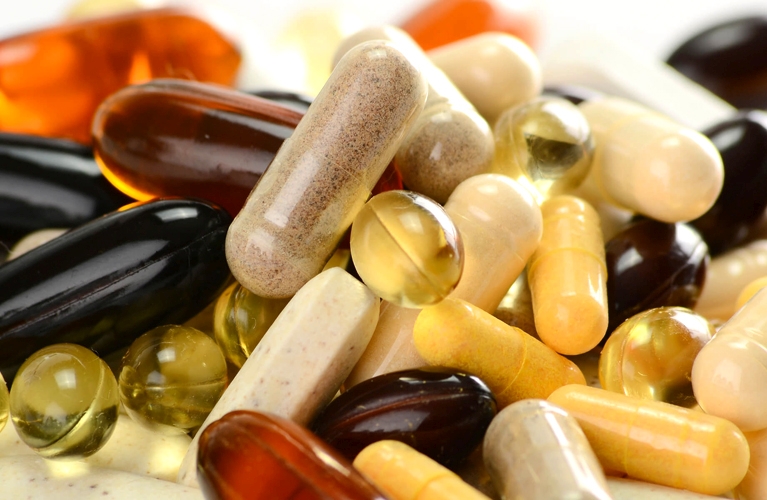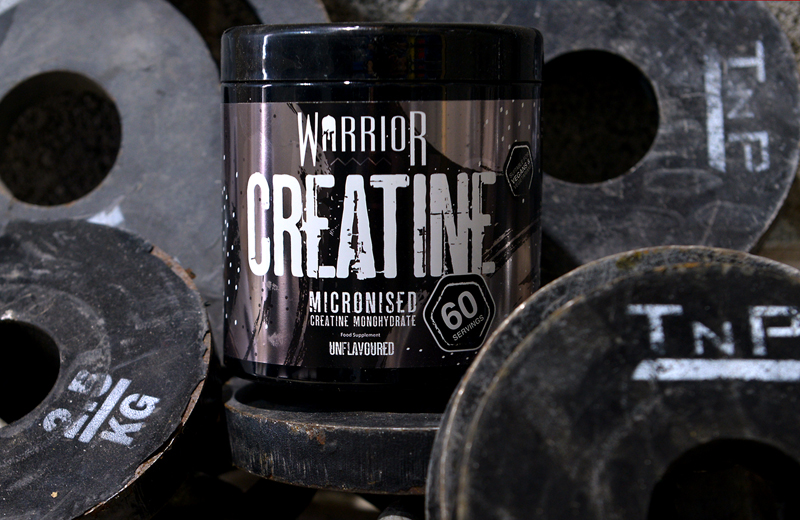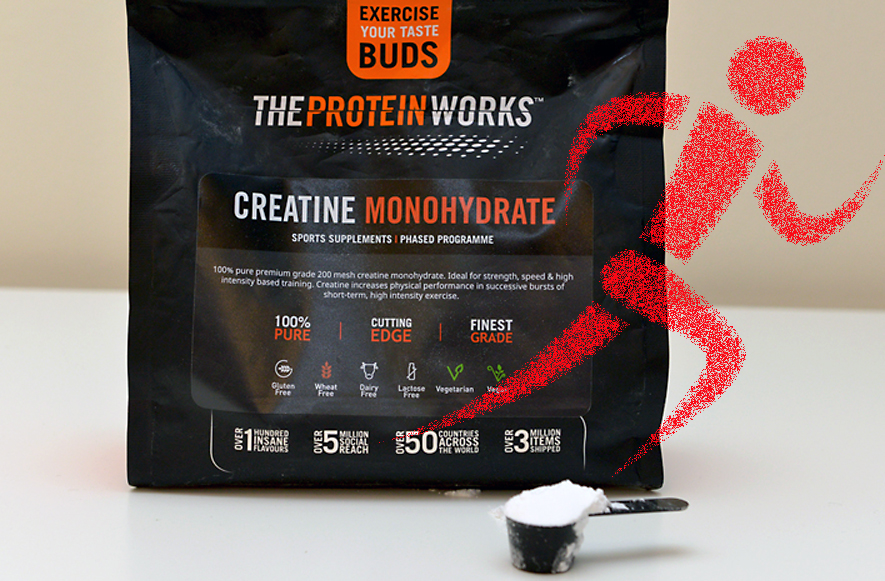Ergonenic aids: the good, the bad and the ugly
Confused by supplements? Jo Beer explains what's good, what's bad and what's plain ugly
With so many sports supplements on the market, it’s easy to get confused. You could be buying something that works, or equally, something that’s just a plain waste of money. Joe Beer sifts the ergogenic wheat from the chaff in an attempt to get you going faster, not going brokeThink about it: how many times have you been tempted by a new product that you see advertised in a magazine, perched on a health store shelf or hailed by a training partner? Alternatively, you may be one of those athletes who would like to get a sports supplement you’ve heard much about but you feel confused about how to use it.
It should come as no surprise that few athletes actually know the mechanisms, evidence and exact usage protocol for supplements they routinely use.
At the other end of the spectrum is the total sceptic who denies there is anything to gain from things that do not appear in ‘the average diet’. This is the ‘supplement denial’ syndrome. I have come across all viewpoints, but have yet to come across a person who could not benefit from tweaking their daily diet, energy product use or supplement regime. It’s not so much that everybody has to be on a perfect regime; more that many can gain from subtle changes by tailoring the diet towards their specific individual needs.
When do supplements become drugs?
It’s an innate part of the psychology of competitive athletes to seek out all methods to improve their performance. Only when the said practice is illegal do we, or should we, call the ergogenic a drug or illegal practice. So, for example, while caffeine has research to show it improves performance (2,3), and despite some purists calling it a ‘drug’, it’s actually a supplement that’s legal to use.
Whatever your moral standpoint on supplements, the vast majority are legal and can therefore be rightfully used in training and competition. The list of banned ingredients, either used deliberately or because of cross-contamination, is one that each athlete needs to be aware of. Ideally you should look for ‘IOC approved’ on the labelling to ensure the company has had a clean bill of health awarded to it. You are responsible for anything you ingest and ignorance is no longer an excuse that can be given to governing bodies.
The good, the bad and the ugly of ergogenic aids
Each item below is worthy of an article of its own, but an overall categorisation (good, bad or ugly), brief research summary and appropriate usage tip is provided. It’s a hard task to sift through all the products out there, so check on the ‘Hierarchy of needs’ table on page 10 to see what is most likely to be of use to you. Spend wisely and don’t forget that supplements require training to make you better – they do not do the hard work and hours of preparation for you.
Carbohydrate ‘energy’ drinks – GOOD
These generally contain 7-15% carbohydrate
(280-600 calories per litre). Look for glucose polymers, maltodextrins and small quantities of fructose (usually the fructose is half the amount of glucose polymer). They are used to delay fatigue during moderate to long training sessions, as part of a carbohydrate-loading regime during a race-taper, or between sessions when eating enough food is near impossible. The benefits are supported by a vast amount of evidence in scientific literature and should be considered a priority in any supplement regime.
Tip: you can help prevent tooth enamel erosion and decay by ensuring your teeth are clean before using carbohydrate products in sessions lasting several hours; never brush your teeth sooner than one hour after using them.
Carbohydrate gels – GOOD
These are syrup- or jam-like mixtures in small sachets, or a ready-mix powder, that provide around 20-30g of carbohydrate per serving. Ideal as a low-weight carbohydrate source carried during training or competition, to which you just need to add 100-200ml of plain water. Some gels are isotonic and therefore do not require additional water.
Tip: useful on long runs or the run leg of a triathlon; ideal emergency food when you hit the wall during a long cycle session.
Carbohydrate and protein ‘energy’ drinks – GOOD
These mixtures contain an approximate 4:1 ratio of carbohydrate to protein, and although new on the sports nutrition scene, have proven research behind them (7,8). Increased endurance to the tune of 30% or more sounds like hype, but the studies suggest 200mls every 20 minutes can do just this (see graph above), and reduces muscle damage during harder and/or longer training sessions.
Tip: ideal for those doing sessions and competitions where fatigue is a contributing factor but not for those just exercising short periods to lose (fat) weight.
Carbohydrate and protein ‘recovery’ drinks – GOOD
These recovery mixtures quickly increase blood sugar and insulin levels aiding the movement of carbohydrate into glycogen-depleted muscles when taken immediately after exhaustive exercise(4). However, these drinks only really benefit muscle glycogen stores in the first four to six hours post-exercise and, in runners, appear to be less useful for endurance capacity (5) despite possibly helping to reduce leg soreness(6). Recovery drinks may help when there’s no suitable food, time or inclination to eat after training. While they’re a ‘better than nothing’ option, high-carbohydrate ‘real food’ snacking within an hour of training is a healthier option for most amateur athletes after most sessions.
Tip: save these for times when you cannot get real food and really need a fast hit of carbohydrates; but follow with real food within the hour.
Caffeine – GOOD
Caffeine can increase mental focus and endurance, especially if you abstain, then load up before an important session or race (eg 2-5mg per kg of bodyweight one hour beforehand). The research suggests that while caffeine may give a small advantage over shorter events (1-3%), it could enhance exercise to exhaustion by 10-20% or
more (9). Evidence also suggests that the ‘caffeine causes dehydration’ myth is not true (10,11) and that caffeinated drinks can safely form a part of an athlete’s daily diet and pre-performance regime without negative impact.
Tip: worth using during longer sessions or as a pre-race strategy for maximal focus and performance.
Chromium – GOOD/BAD
Chromium is a favourite fat loss/lean mass gainer in most health food stores. However, the evidence for its efficacy is much stronger in animals than in humans. Few rigorous studies appear to support spending money on this supplement although some people suffering with blood sugar swings may benefit as chromium can help rebalance blood glucose homeostasis.
Tip: look for a low dose of chromium (eg 25ug) in your daily multi-vitamin/mineral; but few will see benefits from specific chromium supplementation.
Citrus aurantium – GOOD
An extract from oranges, for which there is some evidence that it can aid fat loss and mood enhancement(12). Some energy drink formulations now include this ergogenic for increased endurance and focus.
TIP: it’s not a vital ergogenic aid, but if you find it in a drink and you want more energy and weight loss, there’s certainly no harm in it.
Creatine – GOOD
The ergogenic potential of creatine is extremely well documented in the literature, but with the proviso that it may increase lean mass and therefore may not benefit athletes whose sport involves working against gravity (eg distance runners and cyclists). Creatine is one of only two supplements where there’s unambiguous scientific evidence for its ability to build lean muscle (when combined with resistance training). Although it is sometimes touted as a fat reducer, these claims are not valid; it may increase water (lean) weight but does not affect fat loss. Creatine is safe – in an analysis of creatine users (six months to five years) liver and kidney analyses failed to show any detrimental effects compared to non-users; indeed, creatine may even enhance hydration and thus benefit those who exercise in the heat (13). The claims that it produces cramping, bloating or excessive water retention are not proven. Creatine may also help vegetarians, whose diets contain little compared to meat-eaters (14).
Tip: use on a low dose (5g/day) for a month-long load when looking to ensure muscle stores are full, or load up (5g, four times a day for four to six days) to get more rapid lean mass and strength gains.
Ephedra – UGLY
Also known as Ma Huang, ephedrine is a herbal supplement that may or may not increase performance, reduce appetite and increase body temperature via thermogenesis. Ephedra is banned by the IOC, UCI and other governing bodies in sport. It is sometimes recommended by Chinese herbalists to aid lung function, but, whether natural or synthetic, it can cause anxiety, rapid heart rate and insomnia.
Tip: caffeine or guarana are legal and a better choice of pick-me-up.
Glycerol – GOOD
A syrup-like liquid that can increase body fluid stores when taken at the right dose (1ml per kg bodyweight) with plenty of water (20-25ml per kg bodyweight) two to four hours before training or racing in the heat (15,16,17). Used successfully by many athletes, glycerol is cheap and when the temperature rises, it can be a pre-event load-up that reaps very useful benefits.
Tip: try this in training first, as the volume, taste and regime of use must be tested before dropping it into a race day scenario.
Hydroxy methylbutyrate (HMB) – GOOD
Like creatine, this protein-like compound can enhance lean tissue gains from a resistance training programme and reduce muscle damage(18). Data also show gains in exercise capacity in endurance athletes (19). It will not affect fat loss and is not a cheap supplement, but if all other nutritional supplement areas are being covered and training is at a peak, HMB could add a few extra percent your way.
Tip: spread 3,000mg over the day in 500 to 1,000mg doses over a peak training period of two to three weeks.
Isotonic drinks – GOOD
A carbohydrate, electrolyte and water mixture, which is in equal concentration to the body’s fluids, so easily absorbed. Drinks that are isotonic tend to be around 5-7% sugar but some can be isotonic at 15%.
L-carnitine – GOOD/BAD
Once touted as an important fat-shuttling nutrient, research now appears to suggest it’s more useful as a membrane repair aid rather than aiding fat loss(20). Together with the cost, this means that for athletes seeking fat loss, L-carnitine is not a worthwhile investment. However, it can reduce muscle soreness and therefore can be used effectively during high loads of training.
Tip: take 2-4g per day to aid recovery during peak training loads; but not for fat loss or for those training less than 10 hours per week.
Medium chain triglyceride (MCT) – GOOD/BAD
A type of fat that can be absorbed rapidly and used as fuel. MCT has been found to be ergogenic when added to carbohydrate drinks (21); however, the evidence is not totally conclusive (22).
Tip: unlikely to be of benefit, so spend your money on more important energy sources such as carbohydrate and protein/energy drinks.
N-acetyl cysteine – BAD
This antioxidant may help tissue repair after hard training but could be expensive when taken in the quantities likely to be needed to produce an effect.
Tip: leave alone unless you train and race for your job.
Phosphatidylserine – GOOD/BAD
Recent research into this phospholipid compound found that soybean-derived supplements of phosphatidylserine helped to improve exercise capacity at high intensities(23) (see What The Papers Say, below). However, it’s early days and more research is needed.
Tip: watch for more research and wait for prices to drop.
Pseudoephedrine – UGLY
This has been removed from the WADA doping list, and there is recently published evidence for an ergogenic effect (24). However, many experts are still fearful about possible harmful side effects of pseudoephedrine.
Tip: leave well alone, especially as there are safer and more effective stimulants such as caffeine.
Pyruvate – BAD
There is no substantive research to support this supplement’s role as a fat loss agent, antioxidant or performance enhancing ergogenic aid (25, 26).
Tip: forget it, and forget creatine pyruvate as well.
Ribose – BAD
While data on cardiac patients has shown promise, recent research using athletes has failed to show any benefit (3g taken 25 minutes pre-exercise) (27).
Tip: no evidence to suggest this supplement offers any real benefits – spend your money elsewhere.
Vanadyl sulphate – BAD
A bodybuilder’s supplement of the 1980s, which has been touted as a fat reducer and insulin sensitivity enhancer. However, the research suggests it’s ineffective and may actually promote fat gain.
Tip: there are much better lean muscle builders such as creatine and HMB.
Joe Beer is a multisport coach providing coaching and coaching software with online companies, and continues to race competitively for Giant Bikes
References
1. Med Sci Sports Exerc 2006; 38(2): 349-356
2. Int J Sport Nutrition & Exerc Meta 2004; 14(6): 626-646
3. Int J Sport Nutrition & Exerc Meta 2004; 14(6): 698-708
4. J Appl Physiol 1992; 72(5): p.1854-1859
5. Int J Sports Nutr Exerc Meta 2005; 15:590-609
6. Int. J Sports Nutr Exerc Meta 2005; 15:610-624
7. Int J Sport Nutrition 2003; 13(3):382-395
8. Med Sci Sports Exerc 2004; 36(7):1233-1238
9. Int J Sport Nutrition & Exerc Meta 2004; 14(6):626-646
10. Int J Sports Med 1997; 18(1): 40-46
11. Int J Sport Nutrition & Exerc Meta 2005; 15(3): 252-265
12. Current Therapeutic Research 1999; 60(3):145-153
13. Int J Sport Nutr Exerc Meta 2004; 14(4): 443-460
14. Int J Sport Nutr Exerc Meta 2004; 14(5): 517-531
15. J Appl Physiol 1987; 63(6):2262-2268
16. Med Sci Sports Exerc 1990; 22(4):477-483
17. Int J Sport Nutrition 2002; 12(1):105-119
18. J Appl Physiol 1996; 81(5):2095-2104
19. Med Sci Sports Exerc 1997; S252 Abs 1432
20. Int J Sports Med 1996; 17(5):320-324
21. J Appl Physiol 1996; 80(6):2217-2225
22. Int J Sport Nutrition 1999; 8:35-47
23. Med Sci Sports Exerc 2006; 38(4):64-71
24. Med Sci Sports Exerc 2006; 38(2):329-333
25. Int J Sport Nutr 1999; 9(2):146-155
26. JAP Online 2000; 89(2):549-556
27. Int J Sport Nutr Exerc Meta 2005; 15(6):653-664
You need to be logged in to continue reading.
Please register for limited access or take a 30-day risk-free trial of Sports Performance Bulletin to experience the full benefits of a subscription. TAKE A RISK-FREE TRIAL
TAKE A RISK-FREE TRIAL
Newsletter Sign Up
Testimonials
Dr. Alexandra Fandetti-Robin, Back & Body Chiropractic
Elspeth Cowell MSCh DpodM SRCh HCPC reg
William Hunter, Nuffield Health
Newsletter Sign Up
Coaches Testimonials
Dr. Alexandra Fandetti-Robin, Back & Body Chiropractic
Elspeth Cowell MSCh DpodM SRCh HCPC reg
William Hunter, Nuffield Health
Keep up with latest sports science research and apply it to maximize performance
Today you have the chance to join a group of athletes, and sports coaches/trainers who all have something special in common...
They use the latest research to improve performance for themselves and their clients - both athletes and sports teams - with help from global specialists in the fields of sports science, sports medicine and sports psychology.
They do this by reading Sports Performance Bulletin, an easy-to-digest but serious-minded journal dedicated to high performance sports. SPB offers a wealth of information and insight into the latest research, in an easily-accessible and understood format, along with a wealth of practical recommendations.
*includes 3 coaching manuals
Get Inspired
All the latest techniques and approaches
Sports Performance Bulletin helps dedicated endurance athletes improve their performance. Sense-checking the latest sports science research, and sourcing evidence and case studies to support findings, Sports Performance Bulletin turns proven insights into easily digestible practical advice. Supporting athletes, coaches and professionals who wish to ensure their guidance and programmes are kept right up to date and based on credible science.










